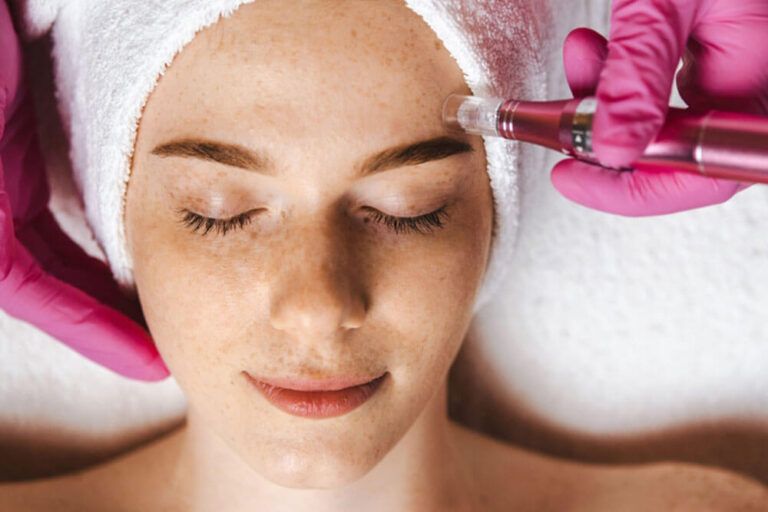Hair loss can be a distressing experience for both men and women. Whether it’s due to genetics, stress, or other underlying conditions, finding an effective solution is a top priority for many. One of the most promising and innovative treatments available today is Platelet-Rich Plasma (PRP) therapy for hair restoration. This non-surgical procedure harnesses the healing powers of your own blood to stimulate hair growth and improve hair health. Here, we explore the benefits and process of PRP therapy for hair restoration.
In This Blog:
- What is PRP Therapy?
- Benefits of PRP Therapy
- The PRP Therapy Process
- What to Expect After PRP Therapy
- IS PRP Therapy Right for You?
What is PRP Therapy?
Platelet-Rich Plasma (PRP) therapy is a cutting-edge medical treatment that utilizes the healing properties of your own blood to promote tissue regeneration and healing. The primary component of PRP is a concentration of platelets, which are small blood cells that play a crucial role in wound healing and tissue repair. Platelets are rich in growth factors and proteins that can accelerate the body’s natural healing processes.
How PRP Therapy Works for Hair Restoration
PRP therapy leverages the natural healing properties of platelets to rejuvenate hair follicles and promote hair growth. Here’s how it works:
- Activation of Hair Follicles: The growth factors in PRP help to stimulate dormant or weakened hair follicles, encouraging them to enter the active growth phase (anagen phase). This leads to the production of new hair strands.
- Improvement of Hair Health: PRP not only promotes new hair growth but also improves the health and thickness of existing hair. The growth factors and proteins in PRP enhance the blood supply to hair follicles, strengthen hair roots, and increase hair shaft thickness.
- Reduction of Hair Loss: By revitalizing hair follicles and improving scalp health, PRP therapy can help to reduce hair shedding and slow down the progression of hair loss.
Benefits of PRP Therapy for Hair Restoration
Natural and Safe:
PRP therapy involves using your own blood, which significantly reduces the risk of allergic reactions or infections. This natural approach is appealing to those who prefer treatments with fewer synthetic or chemical components.
Stimulates Hair Growth:
The growth factors in PRP help stimulate dormant or weakened hair follicles, encouraging them to enter the active growth phase (anagen phase). Many patients experience an increase in hair density and thickness, with new hair growth noticeable after a few treatment sessions.
Improves Hair Health:
PRP therapy not only stimulates new hair growth but also improves the quality of existing hair. It can make hair stronger, thicker, and healthier overall. The treatment enhances the blood supply to hair follicles, strengthening the hair roots and reducing hair breakage.
Non-Surgical and Minimally Invasive:
Unlike hair transplant surgery, PRP therapy is a non-surgical procedure that requires no incisions or sutures. This means a shorter recovery time and minimal discomfort. Each PRP session typically lasts about an hour, making it a convenient option for those with busy schedules. Patients can usually resume their daily activities shortly after the procedure, as there is minimal downtime involved.
Versatile
PRP therapy can benefit individuals with different types of hair loss, including androgenic alopecia (male and female pattern baldness), alopecia areata, and hair thinning due to stress or medical conditions.
Long-Lasting Results
With a series of treatments and occasional maintenance sessions, the results of PRP therapy can be long-lasting. Patients often see continued improvement in hair growth and density over time.
Boosts Confidence
The increase in hair density and health can lead to a more youthful and vibrant appearance, boosting self-esteem and confidence. Addressing hair loss concerns can significantly improve mental well-being, reducing the stress and anxiety associated with hair thinning or baldness.
The PRP Therapy Process
The process of PRP therapy for hair restoration involves several key steps:
Consultation:
The first step is a thorough consultation with a qualified medispa professional. During this consultation, your hair loss condition will be assessed, and your medical history will be reviewed to determine if PRP therapy is a suitable option for you.
Blood Draw & Preparation of PRP:
Once you are deemed a good candidate for PRP therapy, a small amount of blood is drawn from your arm, similar to a routine blood test. The collected blood is then placed in a centrifuge, a machine that spins the blood at high speed to separate the platelets from other blood components. This process takes about 10-15 minutes and results in a concentrated platelet-rich plasma. The platelet-rich plasma is then carefully extracted from the centrifuge and prepared for injection.
Scalp Injection:
Using a fine needle, the PRP is injected into the areas of the scalp experiencing hair thinning or loss. The injections are strategically placed to target the hair follicles and promote optimal results.
Post-Treatment Care:
After the procedure, you may experience mild redness or swelling at the injection sites, which typically subsides within a day or two. Your medispa professional will provide you with post-treatment care instructions to ensure the best outcomes.
What to Expect After PRP Therapy
Results from PRP therapy for hair restoration can vary depending on individual factors such as the extent of hair loss and the body’s response to the treatment. Most patients begin to notice an improvement in hair density and thickness within a few months of starting the therapy. Multiple sessions, usually spaced a few weeks apart, are often recommended for optimal results.
Is PRP Therapy Right for You?
PRP therapy for hair restoration can be an excellent option for individuals experiencing hair thinning or mild to moderate hair loss. It can be effective for various types of hair loss, including androgenic alopecia, alopecia areata, telogen effluvium, traction alopecia, and hair thinning due to stress or medical conditions. It is particularly beneficial for those who prefer a non-surgical, natural approach to hair restoration. However, it’s essential to consult with a qualified medispa professional to determine if PRP therapy is the right treatment for your specific needs.
Conclusion
PRP therapy for hair restoration offers a promising and natural solution for those struggling with hair loss. With its numerous benefits and minimally invasive process, it has become a popular choice for many seeking to improve their hair health and appearance. If you’re considering PRP therapy, schedule a consultation with Modern Image Aesthetics & Wellness to explore how this innovative treatment can help you achieve your hair restoration goals.
Feel free to contact us to book a consultation and take the first step towards revitalizing your hair with PRP therapy. Your journey to healthier, fuller hair begins here!
Yuliya Crosley, ARNP is a registered nurse with 28 years of experience in the medical field and 5 plus years in medical aesthetics. She has been internationally trained by some of the most advanced aesthetic providers and plastic surgeons in the country and abroad, is certified in advanced aesthetic procedures and facial rejuvenation, and attends multiple workshops, seminars, symposiums, and trainings. She is an expert in dermal fillers, facial profile balancing, lips augmentation, advanced aesthetic laser skin resurfacing, body contouring, PDO thread lift, and medical grade skin care.














